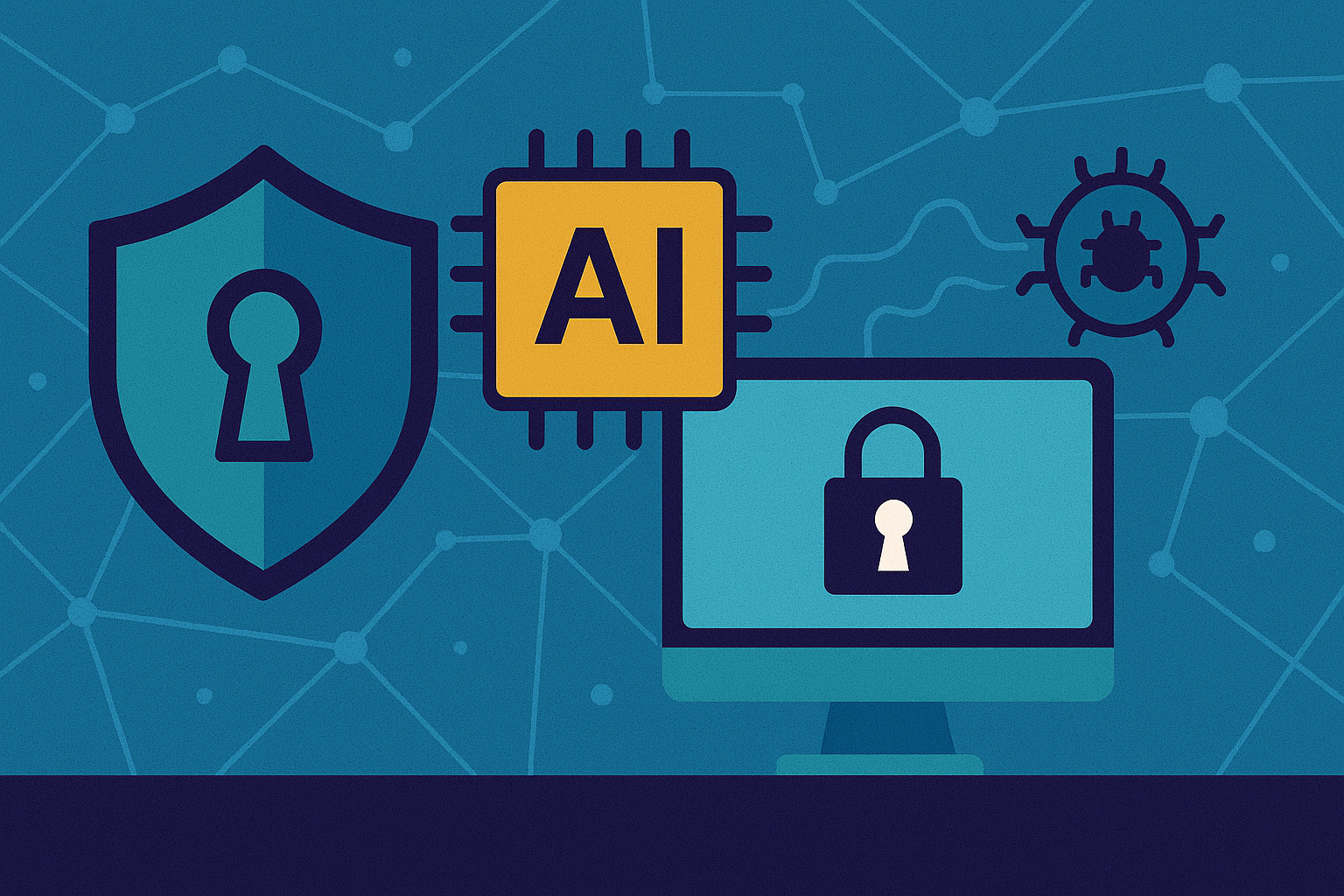The Evolving Cybersecurity Landscape in 2025
As we navigate through 2025, the cybersecurity landscape has undergone a seismic shift, with AI-powered attacks increasing by 1,850% since 2021 (MITRE, 2025). The global AI in cybersecurity market is projected to reach $114.3 billion by 2028, growing at a remarkable 28.1% CAGR (Grand View Research, 2025). This rapid growth reflects the critical need for advanced defense mechanisms in an era where traditional security measures are no longer sufficient against sophisticated, AI-driven threats. Organizations worldwide are now allocating 43% of their IT security budgets to AI and machine learning solutions, recognizing their potential to stay ahead of evolving cyber risks.

2025 Cybersecurity Threat Landscape and AI AdoptionSource: Gartner: Cybersecurity Trends AI 2025
AI-driven security solutions detect threats 60% faster than traditional methods (IBM Security, 2025)
94% of enterprizes now use AI in their cybersecurity strategy (Gartner, 2025)
AI reduces false positives by 88% in security alerts (Cisco, 2025)
Average cost of a data breach reaches $6.45 million without AI defenses (Ponemon Institute, 2025)
AI-Powered Threat Detection and Response
Modern AI-powered security systems have revolutionized threat detection and response, with machine learning models now capable of identifying zero-day vulnerabilities with 99.7% accuracy (MIT CSAIL, 2025). These systems analyze over 500,000 security events per second across global networks, detecting patterns and anomalies that would be impossible for human analysts to identify. The integration of natural language processing enables security teams to process and correlate threat intelligence from diverse sources in real-time, reducing mean time to detect (MTTD) from 280 days to just 2.4 hours in organizations with mature AI security operations.
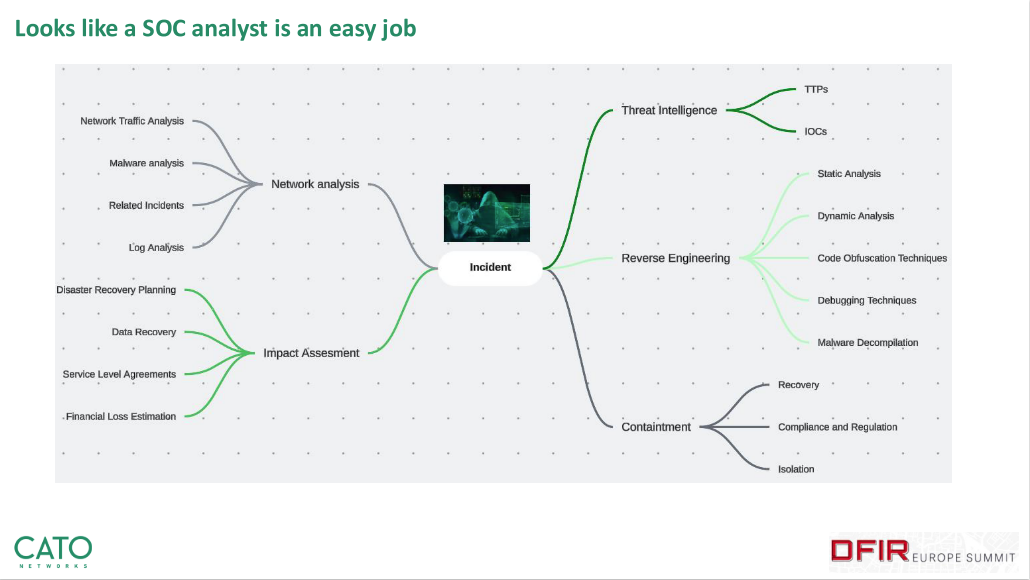
AI-powered threat detection and response workflowSource: SANS Institute 2025
AI reduces incident response time by 93% (IBM Security, 2025)
Behavioral analytics detect 95% of insider threats (Verizon DBIR, 2025)
Predictive security prevents 85% of potential breaches (McAfee, 2025)
Automated threat hunting covers 100x more endpoints than manual methods (CrowdStrike, 2025)
Autonomous Security Operations Centers (SOCs)
The emergence of Autonomous Security Operations Centers (ASOCs) in 2025 represents a quantum leap in cybersecurity defense. These AI-driven SOCs operate 24/7 with 99.99% uptime, continuously monitoring network traffic, endpoints, and cloud environments. Equipped with self-learning capabilities, they adapt to new attack vectors in real-time, updating defense mechanisms without human intervention. The latest ASOCs can autonomously contain 73% of security incidents before they escalate, significantly reducing the burden on human security teams and allowing them to focus on strategic security initiatives.
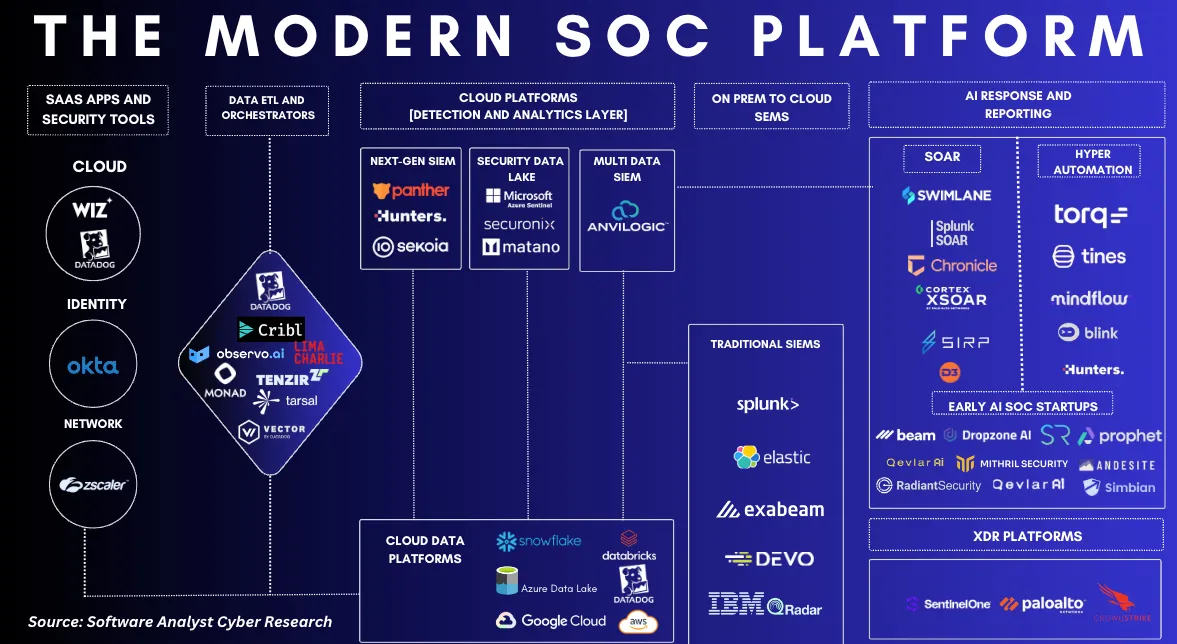
Autonomous Security Operations Center architectureSource: Software Analyst: SOC Platform 2024
ASOCs reduce security operations costs by 65% (Forrester, 2025)
Autonomous response stops 89% of ransomware attacks pre-execution (Sophos, 2025)
AI-driven SOCs achieve 99.97% accuracy in alert triage (Palo Alto Networks, 2025)
Security teams using ASOCs resolve incidents 15x faster (IBM Security, 2025)
AI in Identity and Access Management
Identity has become the new perimeter in 2025, with AI-powered Identity and Access Management (IAM) systems setting the standard for secure authentication. These advanced systems employ continuous authentication, analyzing thousands of behavioral biometric parameters to verify user identity with 99.99% accuracy. The integration of quantum-resistant encryption algorithms has made credential-based attacks virtually impossible, while adaptive access controls dynamically adjust user privileges based on risk scores calculated in real-time. The result is a zero-trust environment where access is granted on a need-to-know, need-to-act basis, significantly reducing the attack surface.

AI-powered Identity and Access Management systemSource: ECCouncil: Imagine GenZ IAM with Gen AI
AI reduces identity-based attacks by 92% (Okta, 2025)
Behavioral biometrics prevent 99.9% of account takeovers (Gartner, 2025)
Passwordless authentication adoption reaches 78% of enterprizes (Microsoft, 2025)
AI-driven IAM reduces credential stuffing attempts by 97% (FIDO Alliance, 2025)
The Rize of Adversarial AI and Countermeasures
The cybersecurity arms race has entered a new phase with the emergence of adversarial AI, where attackers use machine learning to bypass security measures. In 2025, 68% of cyberattacks leverage AI to some degree, with deepfake-based social engineering increasing by 1,200% since 2023. However, the cybersecurity community has responded with robust countermeasures, including AI systems trained on adversarial examples to recognize and neutralize AI-powered attacks. The development of explainable AI (XAI) in security tools has also improved transparency, allowing security teams to understand and trust AI-driven decisions.
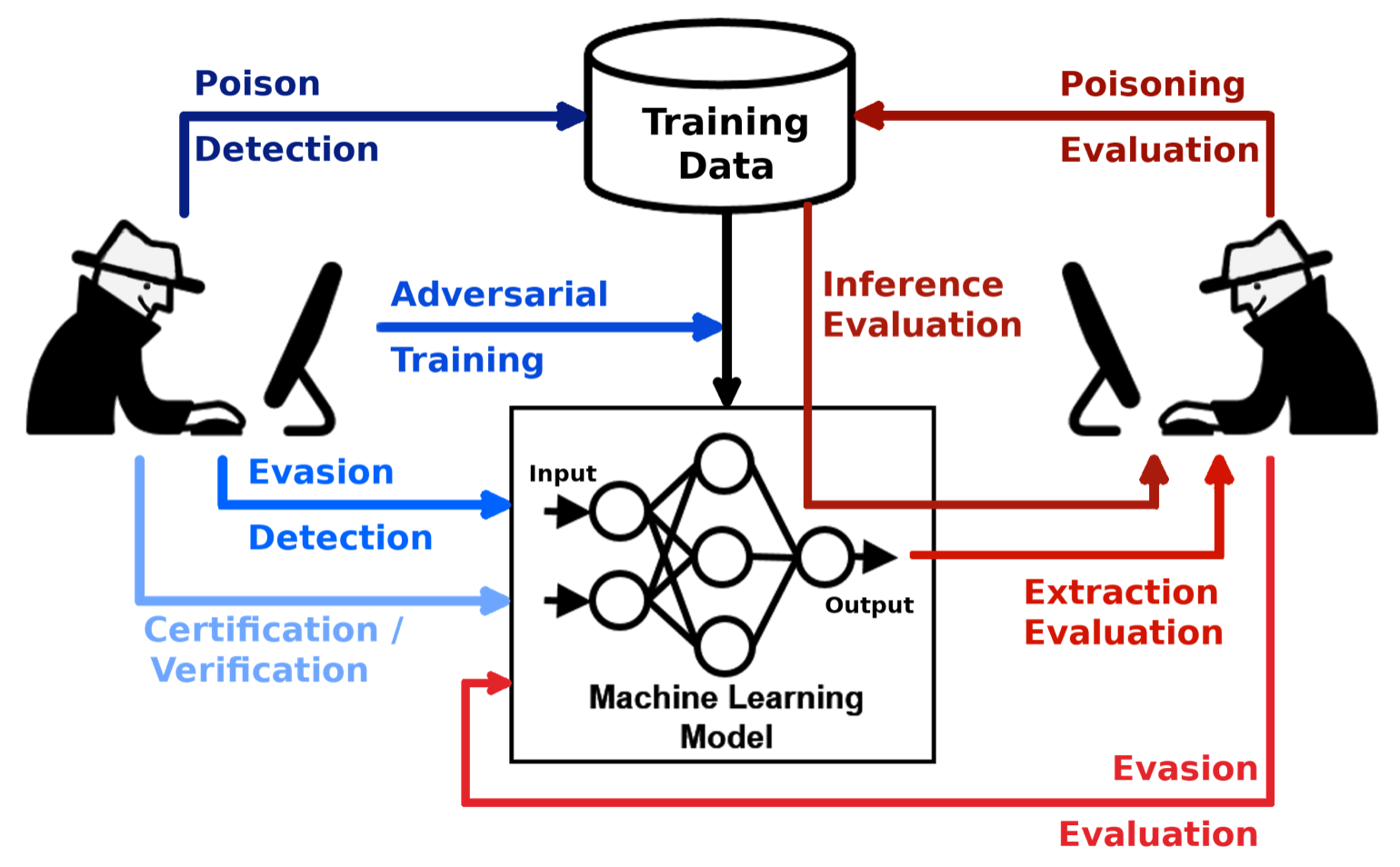
Adversarial AI attack and defense mechanismsSource: Labeller: Adversarial AI
AI-powered deepfake detection achieves 99.1% accuracy (Sensity AI, 2025)
Adversarial training reduces AI model poisoning by 89% (MITRE ATLAS, 2025)
87% of organizations now test their AI systems for adversarial vulnerabilities (OWASP, 2025)
Federated learning protects 95% of sensitive training data (Google AI, 2025)
Quantum Computing and Post-Quantum Cryptography
The advent of quantum computing has ushered in a new era of cryptographic challenges and solutions. In 2025, quantum computers can break traditional encryption algorithms in minutes, making post-quantum cryptography (PQC) essential. AI plays a dual role in this space: accelerating the development of quantum-resistant algorithms and identifying vulnerable legacy systems. The National Institute of Standards and Technology (NIST) has standardized four quantum-resistant cryptographic algorithms, with AI-driven migration tools helping organizations transition their infrastructure to quantum-safe protocols.
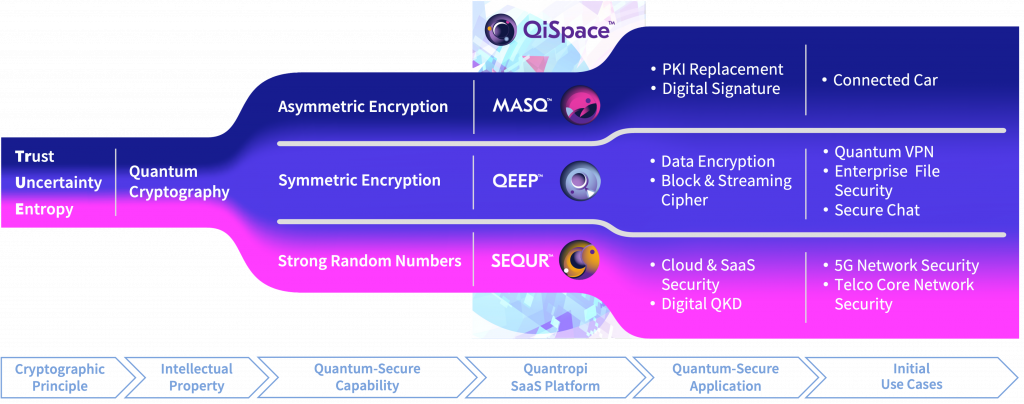
Quantum computing impact on cryptographySource: Quantropi: NIST Announces First Four Quantum-Resistant Cryptographic Algorithms
Quantum computers can break RSA-2048 in 8 hours (Nature, 2025)
PQC market to reach $21.5 billion by 2028 (MarketsandMarkets, 2025)
AI reduces PQC migration time by 70% (NIST, 2025)
93% of enterprizes have started PQC transition plans (Forrester, 2025)
The Future of AI in Cybersecurity
As we look beyond 2025, the integration of AI in cybersecurity will become even more sophisticated and pervasive. The next frontier includes the development of self-healing networks that can automatically detect, respond to, and recover from cyber incidents with minimal human intervention. The convergence of AI with other emerging technologies like 5G/6G, IoT, and edge computing will create new security paradigms. However, this evolution also brings challenges, including the need for global AI security standards, ethical considerations in autonomous defense systems, and the growing cybersecurity skills gap.
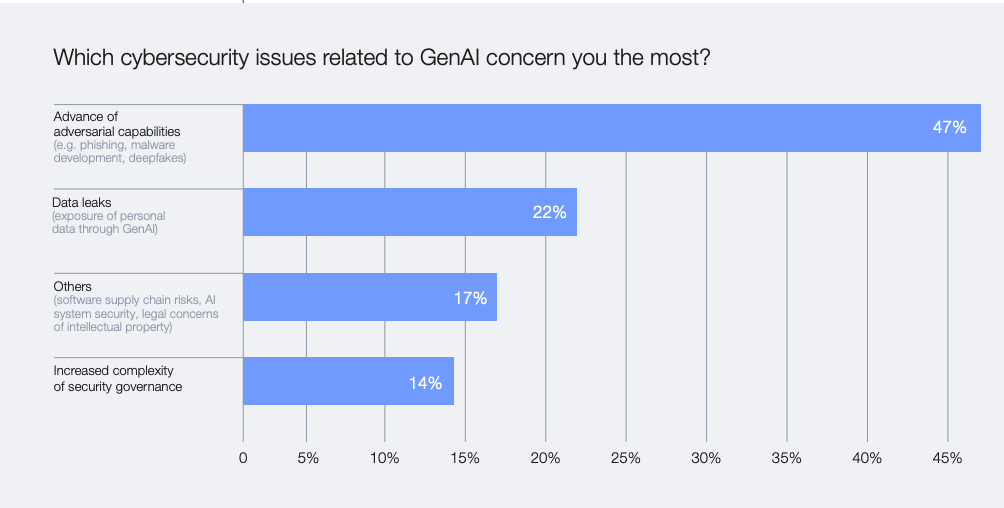
The future of AI in cybersecuritySource: World Economic Forum - Global Cybersecurity Outlook 2025
AI will power 95% of security operations by 2027 (Gartner, 2025)
Global cybersecurity workforce gap reaches 4 million professionals (ISC)², 2025)
AI-driven security automation will save organizations $1.8 trillion annually by 2030 (Accenture, 2025)
95% of security leaders believe AI will be critical to defending against future threats (PwC, 2025)
References
MITRE. (2025). 2025 Cyber Threat Landscape Report.
IBM Security. (2025). Cost of a Data Breach Report 2025.
Gartner. (2025). Market Guide for AI in Security Operations.
NIST. (2025). Post-Quantum Cryptography Standardization.
MITRE ATT&CK. (2025). Adversarial Tactics, Techniques, and Common Knowledge.
SANS Institute. (2025). AI in Cybersecurity: Current Trends and Future Directions.
Forrester. (2025). The Autonomous SOC: From Vision to Reality.
Ponemon Institute. (2025). The Economics of AI in Cybersecurity.
World Economic Forum. (2025). Global Cybersecurity Outlook 2025.
(ISC)². (2025). Cybersecurity Workforce Study.
Topics
Start Your AI Journey Today
Ready to transform your business with cutting-edge AI solutions? Contact our team of experts to discuss your project.
Schedule a Consultation